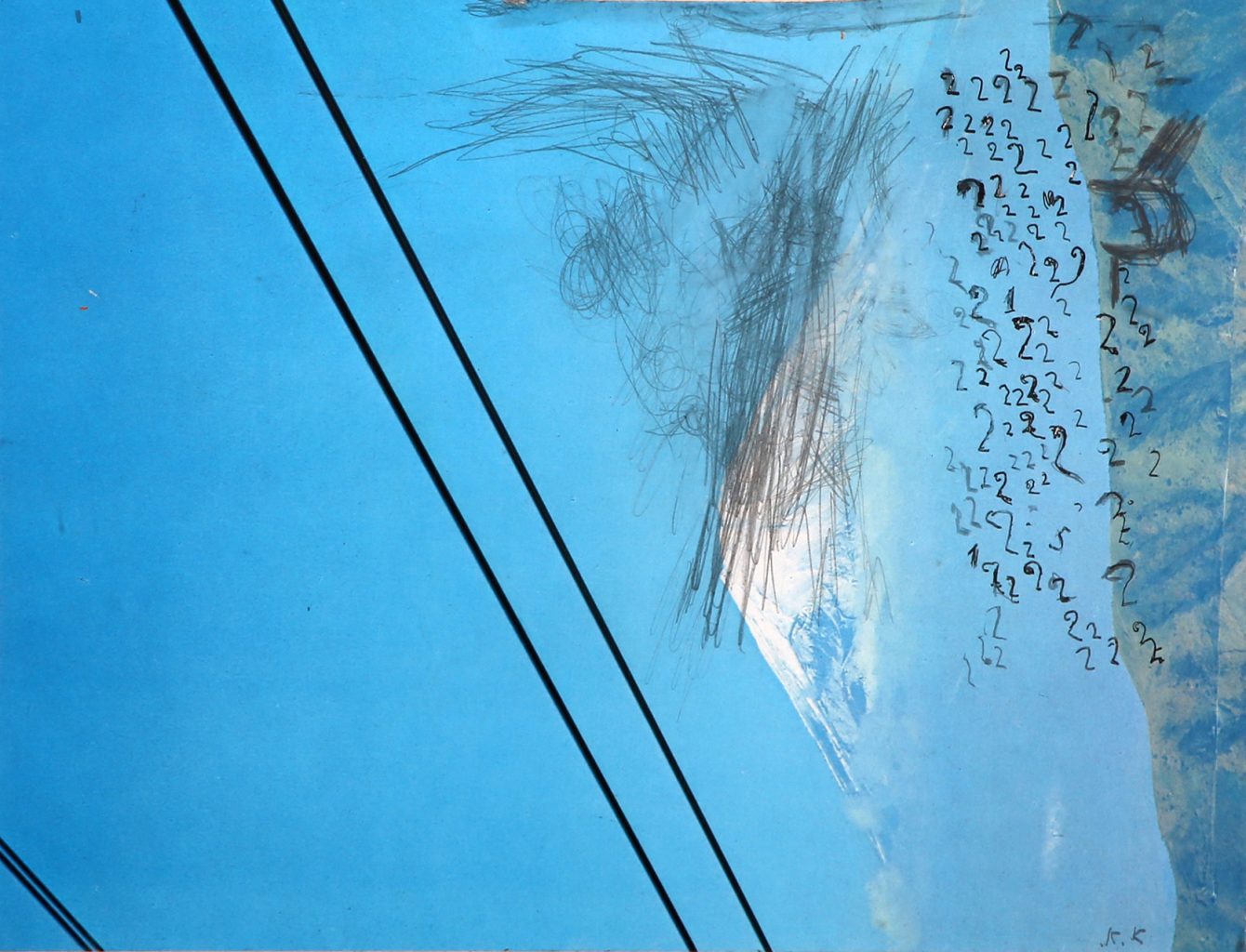Arie Aroch (1908-1974)
Untitled, 1964
Mixed media and collage on photograph
Courtesy of the Leonid and Tatiana Nevzlin Collection
The Israeli painter and diplomat Arie Aroch developed his own “concrete-abstract” style. he focused on the painting’s horizontal and vertical lines, dividing the composition in an almost geometrical manner. This conceptual, personal, historical and biographical gesture drew on his Jewish consciousness, and at the time was considered avant-garde.
Must Know
Arie Aroch (born in Kharkov, 1908, died in Jerusalem, 1974) was an unusual figure in the history of Israeli art. During his first years as an independent artist (1935-1945) he was loyal to the ideals of his generation–landscape and portrait artists–and absorbed the influences of the local scene and of Paris, both of which shaped the nature of the Expressionistic school in Mandatorial Palestine. In the years 1946-1955 he was close to the group Ofakim Hadashim (New Horizons), which he helped found in 1948. During this period his work knew its first important turning point: contrary to the trend that led his colleagues to lyrical, mainly amorphous, abstraction, Aroch used unconventional techniques to develop specific forms he called “concrete.”
More Info
From 1948 onward he spent extended periods in various countries.
Those were times of withdrawal to his studio but also of in-depth dealing with issues of creativity.
From then on, Aroch’s work began to grow as an accumulation of facts, among them, forms developed by the forerunners of modern art, etched in childhood memories, absorbed from literature, traditional motifs, popular images, anonymous objects…
In the last fifteen years of his life, his painting came to articulate, by a complex process of fusion and contrast, a grid of interconnected meanings, relationships both hidden and overt, between the artist and his environment, between his times and other times, between his own forms and forms and images that he found. “For me the period is more crucial than the work’s value,” Aroch said. “You can analyze an artist, appreciate him and you’ve still not touched on time, the inevitability time imposed on the work.”
In this photo of the Fujiyama we can see the cable of a cable-car. The mountain appears on the background of the sky; at the foot of the mountain and the cable – a stretch of land. In fact, there was also a red train car in the photo. The photographer was interested in the mountain with the sky as a background, and beside it the cable against the same background. The mountain, if I try to analyze his motives, serves to accentuate the height of the cable. That, to use a phrase from architecture, is a “functional” photo. For me, the cable, as a line that has been placed next to a form, and the relation between the cable and the mountain, express much more when you forget the “functionality”. To that purpose I turned the direction of the photo and I allow this relation between the mountain and the cable the status of two forms with equal rights.

